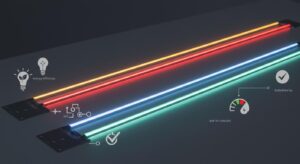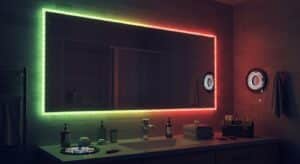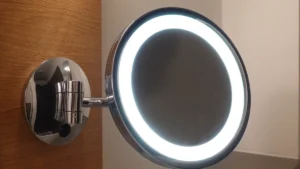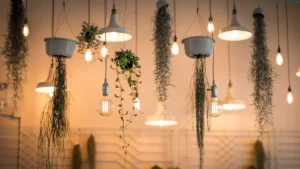
Choosing the right LED panel module can change your lighting. Whether for bright indoor displays or strong outdoor lights, the right panel module works best and saves money. For example, switching streetlights to LED panel modules in India saved 295 million energy units yearly and reduced 2.3 lakh tons of CO2. The global LED market, including LED panel modules, is growing fast and may reach USD 60.7 billion by 2033. This guide will help you choose wisely so your money is well spent and efficient.
Key Takeaways
Picking the right LED panel can improve light and save power. Think about whether you need it for inside or outside use.
Learn about the three main LED types: DIP lasts outdoors, SMD bends easily, and COB shows sharp pictures. Each type works differently.
Brightness and pixel size are important. Outdoor screens need bright lights to be seen in sunlight. Indoor screens need tiny pixels for clear pictures.
Taking care of screens helps them last longer. Clean them often, check wires, and keep them cool to stop overheating.
Spend smartly by balancing upfront costs with future savings. Energy-saving panels cost more at first but lower electricity bills later.
Understanding LED Panel Modules
What Is an LED Panel Module?
An LED panel module is a small unit used in LED screens. It has many tiny lights, called LEDs, arranged in a grid. These modules give off bright and even light, making them great for colorful displays. You can see them on indoor signs or outdoor billboards.
Each module is made to show clear pictures. It has features like brightness control, wide viewing angles, and low energy use. For instance, some modules have a 10mm pixel pitch and brightness of 5000-6000 nits. This makes them easy to see in sunlight or dim rooms. The modular design lets you adjust the screen’s size and clarity to fit your needs.
Key Components of an LED Screen
An LED screen has several important parts that create amazing visuals. Knowing these parts helps you pick the right LED panel module.
LED 模组: This is the main part of the screen. It has the LEDs that light up and a circuit board to control them. A common module might be 320x160mm with 32×16 pixels.
Power Supply: This part gives steady power to the screen. It helps the LEDs work efficiently, using about 250 W/m² of energy.
Control System: This system sends signals to the LED modules. It makes sure the screen shows the right pictures or videos.
Cabinet: The cabinet holds the LED modules and keeps them safe. Outdoor cabinets are often waterproof, with ratings like IP65 to handle bad weather.
Viewing Angle and Brightness: Good screens have wide viewing angles, up to 160° both ways. Brightness above 99% ensures the screen looks even everywhere.
These parts work together to make strong and smooth displays. Whether for indoors or outdoors, knowing these details helps you choose the best LED panel module.
Types of LED Panel Modules: A Simple Guide
When picking an LED screen, knowing the types of LED panel modules is important. Each type has special features and uses, making them fit for certain places and jobs. Let’s look at the three main types: DIP, SMD, and COB modules.
DIP (Dual In-line Package) Modules
DIP modules are one of the oldest kinds of LED displays. These have single LEDs placed through holes on a board. Each LED has two pins that are soldered to keep them steady.
DIP modules are strong and very bright, perfect for outdoor screens. They work well in sunlight and bad weather. But, they are bigger and have smaller viewing angles, so they’re not great for indoor use.
Here’s how DIP modules compare to SOIC (Small Outline Integrated Circuit) technology:
Feature | DIP | SOIC |
|---|---|---|
Pin Count | Up to 64 pins | Up to 48 pins |
Pitch | 0.1 inches (2.54 mm) | 0.5 mm to 1.27 mm |
Size | Larger than SOIC | Smaller than DIP |
Through-Hole Mounting | Yes | No |
Surface Mounting | No | Yes |
Electrical Performance | Good | Better than DIP |
Cost | Lower than SOIC | Higher than DIP |
DIP modules are a budget-friendly option for outdoor screens where brightness and strength matter most.
SMD (Surface-Mounted Device) Modules
SMD modules are a newer and better LED display technology. Here, LEDs are placed directly on the board without needing holes. This makes the modules smaller and more efficient.
SMD modules are used for both indoor and outdoor screens because they are flexible. They have wide viewing angles, use light well, and show colors clearly. These features make them great for stores, meeting rooms, and stadiums.
Here’s how SMD modules compare to other types:
Criteria | SMD LED | DIP LED | GOB LED | COB LED |
|---|---|---|---|---|
Lumens/Watt | 50 – 100 lumens | 35 – 80 lumens | 50 – 100 lumens | 80 – 150 lumens |
Screen Brightness | Medium | Highest | Medium | High |
Light Efficiency | High | Medium | High | Highest |
Viewing Angle | Wide | Narrow | Wide | Wide |
Heat Dispersion | High | Medium | High | Highest |
Pixel Pitch | P1 to P10 | P6 to P20 | P1 to P10 | P0.7 to P2.5 |
Protection Level | Medium | High | Highest | High |
Price | Low | Medium | Medium | High |
SMD modules are a good mix of cost and performance, making them popular for many LED displays.
COB (Chip on Board) Modules
COB modules are the newest in LED technology. They have many LED chips placed on one board and covered with resin. This design makes them stable, reduces heat, and improves light use.
COB modules are great for high-quality indoor screens needing sharp images. They also work well outdoors because they are waterproof and dustproof. But fixing them can be hard and expensive since damaged parts often need full replacement.
Here’s how COB modules compare to GOB (Glue on Board) technology:
Metric | COB (Chip on Board) | GOB (Glue on Board) |
|---|---|---|
Package Structure | Directly packaged on PCB with epoxy resin for stability | Traditional SMD with polymer colloid for protection |
Waterproof and Dustproof | IP65 or higher, suitable for extreme environments | Good sealing, but less effective in extreme climates |
Impact Resistance | Limited resistance, difficult to repair if damaged | Good flexibility, suitable for frequent operation |
Maintenance Difficulty | Complicated and costly, entire module replacement needed | Easier maintenance, partial repairs possible |
Application Suitability | High-end indoor displays requiring accuracy | Outdoor applications needing high protection and impact resistance |
COB modules are perfect for tasks needing clear pictures and durability, like fancy store displays or control rooms.
Uses of Different LED Panel Modules
Knowing where to use LED panel modules helps you pick wisely. Each type—DIP, SMD, and COB—has special features for certain places. Let’s see how they work in real life.
Indoor Uses
Indoor areas need LED screens that are clear, efficient, and flexible. These screens are used in meeting rooms, control centers, and monitoring stations. They show bright and sharp images, helping people share ideas and make decisions. For instance, a control room screen shows important data clearly from all angles.
SMD modules are great for indoor spaces. They are small and have wide viewing angles, fitting well in tight areas. COB modules are also good indoors, especially for high-resolution screens. They are perfect for places needing clear and detailed visuals.
Here’s a simple table showing indoor LED benefits:
Setting Type | Use | Benefits |
|---|---|---|
Indoor | Meeting rooms, Control centers, Monitoring stations | Saves energy, Bright visuals, Long-lasting, Flexible, Clear images |
Outdoor Uses
Outdoor spaces need LED screens that handle tough weather and stay bright. You’ll see them on billboards, bus stops, and busy streets. They catch attention and increase visibility by up to 300%, making them great for ads.
DIP modules are best for outdoor use. They are strong and very bright, so messages stay clear even in sunlight. COB modules also work outdoors because they resist water and dust. They perform well in bad weather and last all year.
Here’s a table showing outdoor LED benefits:
Setting Type | Use | Benefits |
|---|---|---|
Outdoor | Ads on billboards, Bus stops, Busy areas | Increases visibility by 300%, Custom messages, Weatherproof performance |
Picking the Right Module
Choose your LED panel module based on what you need. For indoor use, focus on clarity and viewing angles. For outdoor use, look for strength and brightness. By knowing each module’s strengths, you can find the best one for your needs.
Comparing Indoor and Outdoor LED Panel Modules
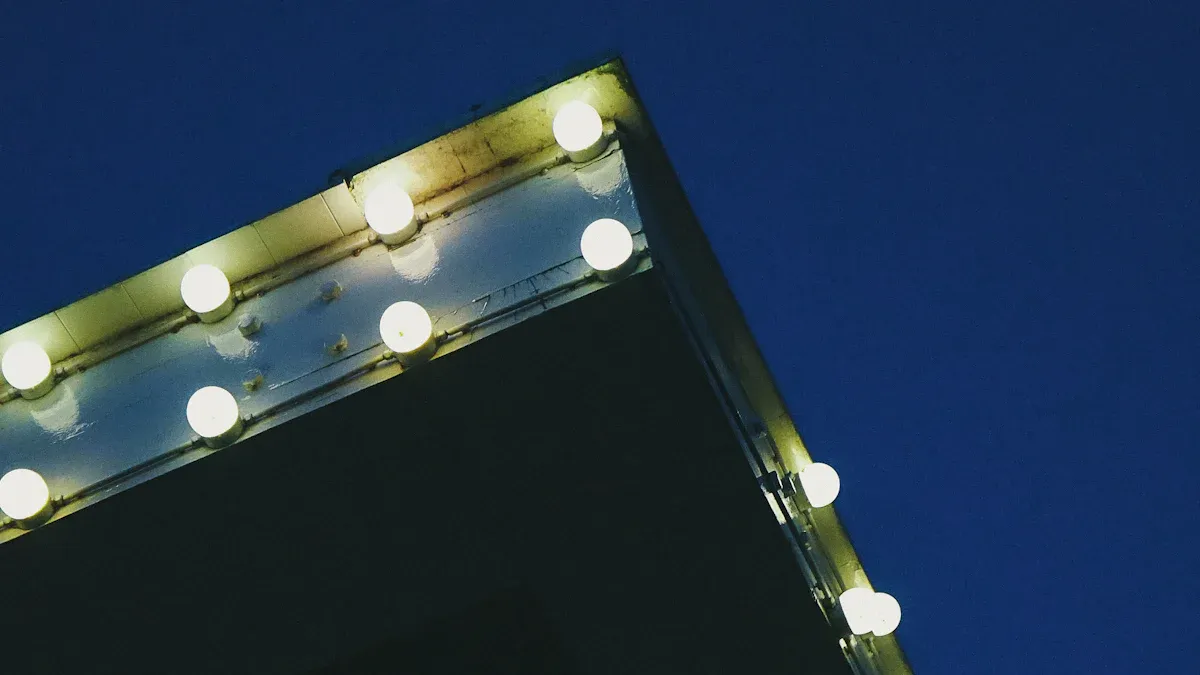
Brightness and Pixel Pitch
When picking indoor or outdoor LED screens, brightness matters a lot. Outdoor screens need to be very bright to be seen in sunlight. For example, P6 and P16 screens, with 6 mm and 16 mm pixel gaps, work well for outdoor ads. These screens are bright and easy to see from far away, making them great for billboards or events. Indoor screens, however, focus on clear images over brightness. They usually have smaller pixel gaps, like 3 mm or less, for sharp pictures up close, such as in stores or offices.
Here’s a simple comparison:
Type of LED | Pixel Gap (mm) | Best Viewing Distance (feet) | Brightness (cd/m²) |
|---|---|---|---|
Outdoor | 8 mm or more | 64 feet (for P8) | Very bright |
Indoor | 3 mm or less | Less than 8 feet | Less bright |
Outdoor screens, like P2.97 and P3.91, can reach brightness levels of 1200 cd/m² and 4000-4500 mcd/㎡. This makes them visible even in tough lighting.
Durability and Weatherproofing
Outdoor LED screens must handle tough weather like rain, dust, and heat. They are made with strong materials and have weatherproof ratings like IP65. This keeps them working in heavy rain or bright sun. Indoor screens don’t need to be as tough. They are made for safe spaces and focus more on looking good and working well.
For outdoor ads, screens must be strong and bright. They need to last long and stay clear. Indoor screens are better for places like meeting rooms or stores, where weatherproofing isn’t needed.
Design and Aesthetic Features
Indoor and outdoor LED screens look and work differently. Indoor screens are slim and light to fit nicely in rooms. They are used for signs or ads where looks matter. Outdoor screens are bigger and stronger to protect against weather but still work well.
Outdoor screens for events are often modular, making them easy to set up and take down. Indoor screens, like those in shops, focus on sharp images and bright colors to grab attention.
By knowing these differences, you can pick the best LED screen for your needs. This ensures it works well and lasts a long time.
LED Module Buying Tips: Important Things to Know
Viewing Distance and Picture Quality
When picking an LED screen, think about how far people will be when viewing it. The pixel pitch, or the space between two pixels, affects how clear the screen looks. Smaller pixel pitches mean sharper images, great for close-up views. Bigger pixel pitches work better for screens seen from far away.
Close-Up Views: Screens with pixel pitches under 1.5mm are perfect for places like stores or control rooms. They show clear pictures even when viewed closely.
Medium Distance: Pixel pitches between 1.5mm and 2.5mm balance cost and clarity. These are often used in offices or meeting spaces.
Far Distance: For events or outdoor screens, pixel pitches of 2.5mm to 3.5mm are ideal. They stay clear even when viewed from far away.
Outdoor Use: Screens with pixel pitches over 3.5mm are best for outdoor signs. They stay bright and clear even from long distances.
For example, a P4 LED screen with a 4mm pixel pitch is best viewed from 8 to 12 meters away. This is calculated using the formula: pixel pitch × 2000 to pixel pitch × 3000. Knowing how far your audience will be helps you pick the right screen size and clarity.
Brightness and Power Saving
Brightness is very important, especially for outdoor screens or bright areas. A bright screen stays visible in sunlight or well-lit spaces. But, it’s also smart to pick energy-saving screens to lower costs.
Feature | What It Means |
|---|---|
Light Efficiency | Shows how much light is made per power used (lm/W); higher is better. |
Best Light Output | Balances brightness for its purpose; follows expert guidelines. |
White Light Mix | Changes how bright the screen looks; different mixes can affect brightness. |
Outdoor screens usually need brightness levels of 4000-4500 nits to stay clear in sunlight. Indoor screens need less brightness, around 800-1200 nits, to avoid being too harsh. Choosing a screen with good light efficiency saves energy and keeps costs low.
Care and Lifespan
Buying an LED screen isn’t just about the price. How long it lasts and how easy it is to fix are also important. Regular care keeps the screen working well for a long time.
Easy Repairs: Pick screens with front or back access for quick fixes. This makes repairs faster and reduces downtime.
Strong Build: Outdoor screens should handle tough weather, like rain or heat, with ratings like IP65. Indoor screens should also be made with good materials to last longer.
Long Life: Good LED screens can last 50,000 to 100,000 hours. Buying from trusted brands and taking care of the screen helps it last longer.
Simple care, like cleaning and checking connections, stops problems before they get worse. By focusing on maintenance, your LED screen will look great and work well for many years.
Budget and Cost Considerations
Picking an LED panel module depends on your budget. Prices vary based on size, technology, and durability. Knowing these factors helps you choose wisely without overspending.
Initial Cost vs. Long-Term Savings
Buying an LED module may seem expensive at first. But it saves money over time. Energy-efficient modules lower electricity bills by up to 70%. Spending more upfront can mean fewer costs later.
What Affects the Price?
Many things change how much an LED module costs. Focus on what matters most to you:
Pixel Pitch: Smaller pixel gaps make sharper images but cost more. Bigger gaps work well for far views and save money.
Brightness Levels: Outdoor screens need high brightness, which costs more. Indoor screens can use lower brightness to save money.
Weatherproofing: Outdoor modules need protection from rain and dust. This makes them pricier than indoor ones.
Technology Type: SMD and COB modules are better but cost more than DIP modules.
Balancing Cost and Quality
Getting good quality without overspending is important. Use these tips to stay within budget:
Know Your Needs: Decide if the module is for indoors or outdoors. Skip features like weatherproofing for indoor screens.
Compare Brands: Check reviews and ratings to find reliable options.
Pick Energy Efficiency: Choose modules with high lumens per watt. They cost more but save money later.
Plan Repairs: Pick modules that are easy to fix. This lowers repair costs and downtime.
Saving Money on LED Modules
If your budget is tight, try these ideas to save money:
Buy in Bulk: Suppliers often give discounts for large orders. This is great for big projects like billboards.
Watch for Sales: Look for deals during holidays or promotions. These can lower costs for good modules.
Choose Trusted Brands: Cheap brands may not last long. Trusted brands offer better quality and performance.
Pro Tip: Use a detailed guide to compare features and prices. This helps you find the best module for your budget.
By planning carefully, you can pick an LED panel module that fits your budget and works well for years.
Installation and Maintenance of LED Panel Modules
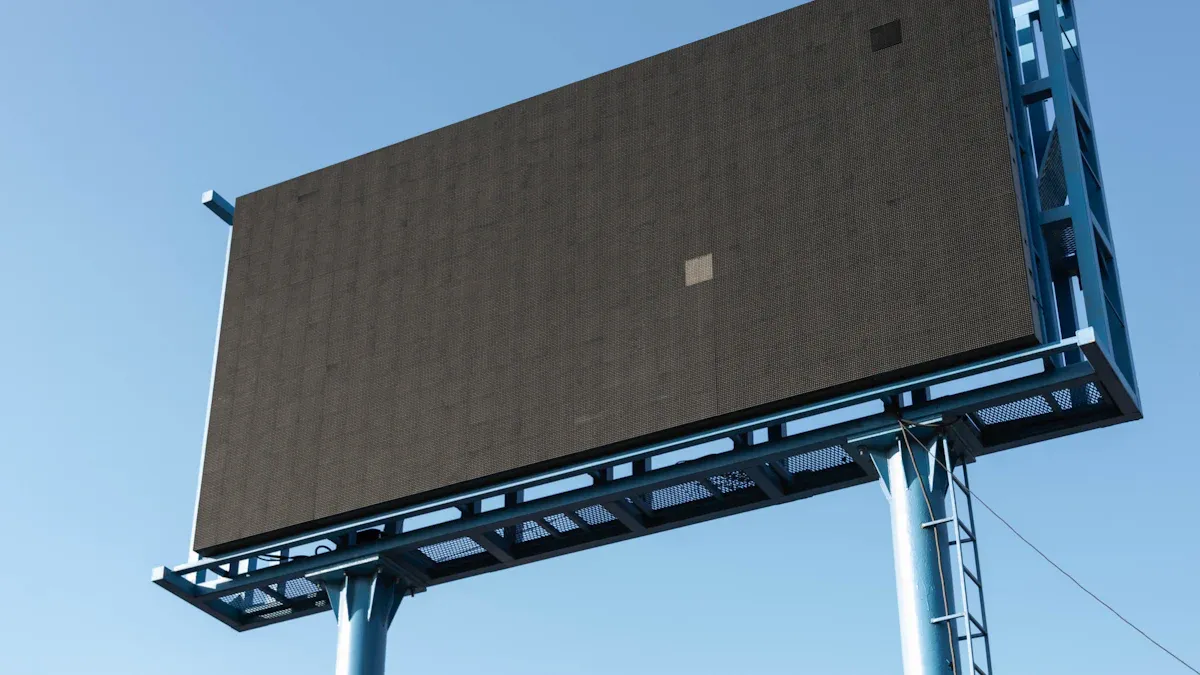
Installation Options for Indoor and Outdoor Use
Setting up an LED screen needs good planning for best results. Indoor and outdoor screens have different needs based on where they are used. Knowing these differences helps you pick the right setup.
Outdoor screens are made to be seen in public places. They need to resist rain, dust, and heat. Adjusting brightness is important for sunlight visibility. For example, billboards or stadium screens use modular designs for easy setup and care. Viewer distance matters too. Outdoor screens are great for far-away viewing, perfect for ads or public messages.
Indoor screens focus on clear visuals and saving energy. They are often used in stores, meeting rooms, and office lobbies. These screens don’t need weatherproofing but must be installed carefully for sharp images. Flexible setups, like wall mounts or freestanding designs, fit different spaces. Indoor screens are made for close viewing, ideal for detailed pictures.
Here’s a simple comparison of installation features:
Feature | Outdoor LED Panels | Indoor LED Panels |
|---|---|---|
Best Use | Ads and public info in busy areas | Displays in stores, offices, and meeting rooms |
Environmental Factors | Must handle tough weather | Focus on clear visuals and energy saving |
Installation Needs | Needs weatherproofing and brightness control | Requires careful setup for sharp images |
Viewer Distance | Good for far-away viewing | Best for close-up viewing |
Cost Considerations | Plan for weatherproofing costs | Budget for energy-saving and clear visuals |
By knowing these details, you can install your LED panel module the right way for its purpose.
Servicing and Maintenance Tips for Longevity
Taking care of your LED screen keeps it working well for years. Regular checks stop problems and make your screen last longer.
Clean the screen often. Dust and dirt can make it less bright and lower picture quality. Use soft cloths or special tools to clean without damage. Outdoor screens need checks for water damage or rust from bad weather. Indoor screens need less cleaning but still benefit from regular care.
Check the power supply and wires. Loose cables or broken parts can cause problems. Look at these parts often to make sure they work well. If repairs are needed, pick screens with easy access to front or back panels. This makes fixing faster and reduces downtime.
Keep the screen cool. LED screens get hot when used. Outdoor screens need good airflow to stop overheating. Indoor screens can use air conditioning or cooling systems to stay at the right temperature.
Buy high-quality LED panel modules. Trusted brands make strong products that last longer and need fewer fixes. Regular care and good parts keep your screen working well over time.
Pro Tip: Get professional servicing once a year. This finds problems early and keeps your LED screen in great shape.
Picking the best LED screen needs some planning. Think about things like how bright it is, the pixel size, and how strong it is. Outdoor screens should survive bad weather, while indoor ones need to be clear and save energy. Always choose a screen that fits how far people will be and what it’s for. Buying a good LED panel module means it will last long and save money. Take time to figure out what you need and look at trusted brands. A good LED screen will show bright pictures and work well for many years.
FAQ
How long do LED panel modules last?
LED panel modules can last 50,000 to 100,000 hours. Their lifespan depends on how they are used and cared for. Cleaning them often and installing them correctly helps them last longer.
Can indoor LED panels be used outside?
No, indoor LED panels cannot be used outdoors. They are not made to handle rain, dust, or extreme weather. Outdoor LED panels are built to survive tough conditions.
How do you pick the right pixel pitch for an LED screen?
Pick the pixel pitch based on how far people will view it. Smaller pitches give clearer images for close views. Larger pitches are better for far-away viewing. For example, a P4 screen works best from 8 to 12 meters away.
Are LED panels good at saving energy?
Yes, LED panels save a lot of energy. They use less power than older lighting systems, cutting electricity costs. Bright outdoor LED panels are also made to use energy wisely.
What care do LED panels need?
LED panels need regular cleaning to stay bright and clear. Check the power connections and make sure they don’t overheat. Outdoor panels should be checked for water or rust damage. Getting them serviced yearly keeps them working well.
See Also
Ultimate Resource for Outdoor LED Light Strip Options
Beginner’s Handbook for Practical Uses of LED Modules
Key Tips for Selecting the Perfect LED Sign Module
Ways LED Modules Improve Lighting for Sign Boards
Reasons to Choose LED Modules for Your Signage
